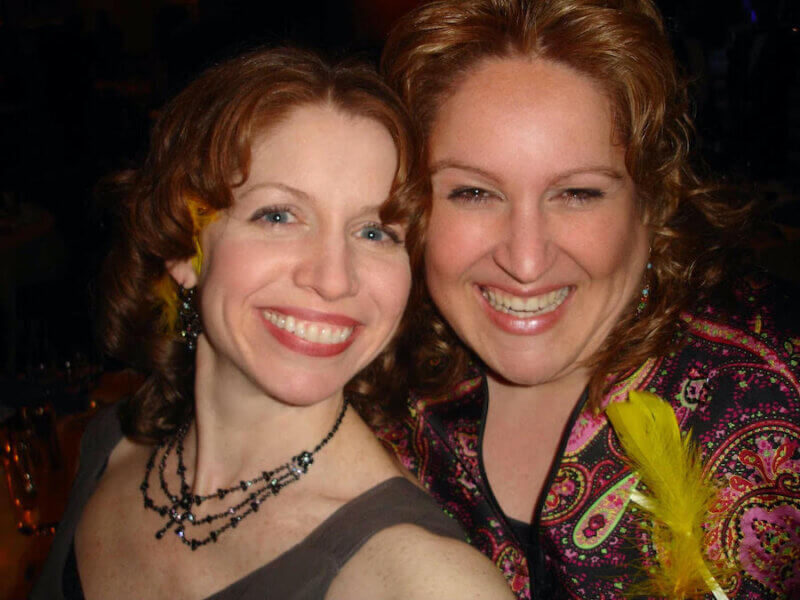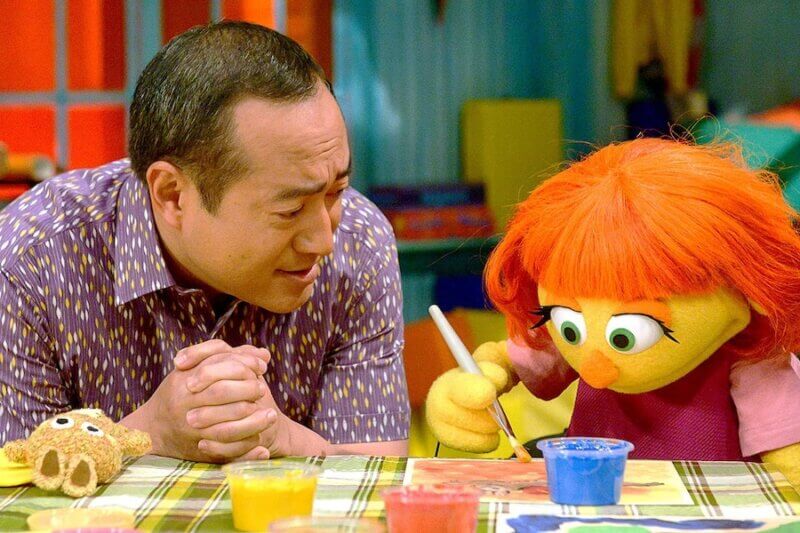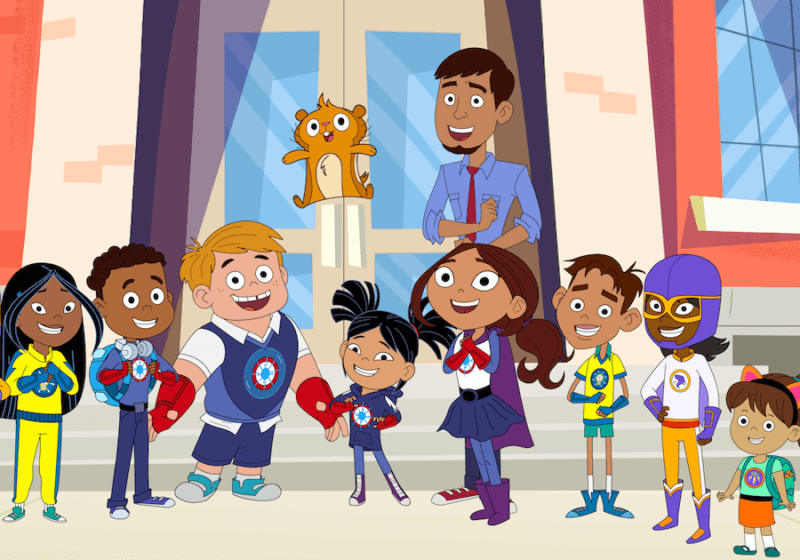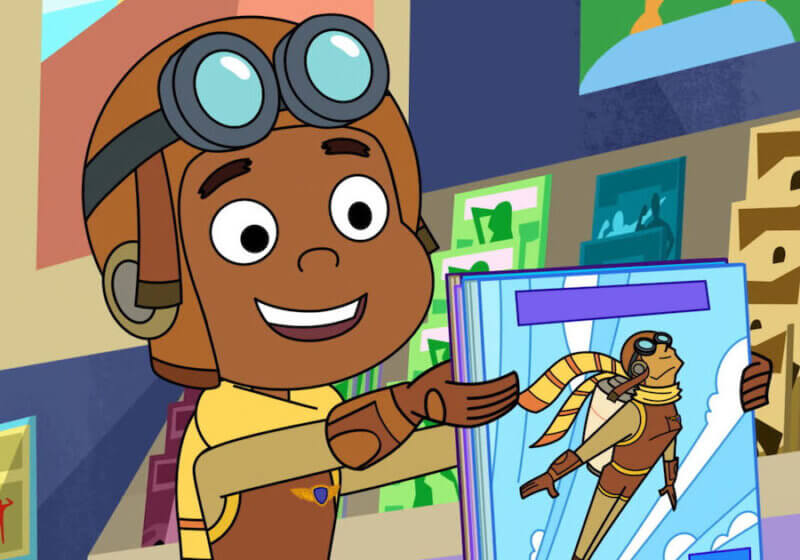Autism Awareness Month: Interview with ‘Hero Elementary’ Creators Carol-Lynn Parente and Christine Ferraro
2023 marks the third year of our series of interviews for Autism Awareness Month, where we speak with those who have made stories and characters in animation that have reflected the experiences of autistic people as well as those on the spectrum themselves who have gone on to create some truly unique pieces of work that many have fell in love with on a global scale.
The creators behind PBS Kids’ Hero Elementary, Carol-Lynn Parente and Christine Ferraro, join us to discuss their careers in Sesame Street and how they created an animated series featuring young superheroes in training. But throughout their work in children’s television, they have also made a couple of celebrated autistic characters that have connected with young audiences.
I was really impressed that you both started your careers on one of the biggest children’s television shows of all time, Sesame Street. How did you both land your first jobs on a property filled with iconic characters and what was it like to progress through your careers there?
CLP: I started at what was then called, Children’s Television Workshop in 1988, in the Talent Payment department. It was a finance job and only my 2nd job out of school. I graduated with a double major in Economics/Marketing, but I did an internship at NBC in Manhattan in my senior year and was hooked on wanting to work in television after that. I applied for every open job on the production staff of Sesame Street, and one year after joining the company, there was an opening as the assistant to the Post Production Supervisor. I steadily rose through the ranks over my 30-year career, going from Production Assistant to Associate Producer, to Producer and finally, Executive Producer and SVP of Creative before leaving in 2016 to pursue other interests. We were very lucky to begin our careers on such a special show that continues to be the gold standard in children’s content. The show was already in season 18 when I joined, and well established. The hardest part about the job over the years was working to evolve the iconic show, to keep it relevant and fresh for the current pre-schoolers, without disappointing the large adult fan base that had a real affectionate relationship with the show and characters they grew up with.
CF: I started working on the show as an administrative assistant, right out of college. I was lucky enough to have a teacher at my school who needed an assistant, and the timing was right. I grew familiar with the show and the scripts, and when they were auditioning new writers, I decided to give it a try. I’ve been writing for the show for 30 years now, and still going!
You were both also part of the team who helped to create Julia, the first autistic character on Sesame Street. How and why was she made for the show?
CF: Sesame Workshop had a nationwide initiative, See Amazing in All Children, aimed at communities with children ages 2 to 5. Julia was a character created to be on the autism spectrum, to help introduce the topic to young children and their families. The focus of the initiative was to reduce stigmas around autism and build understanding and acceptance. Julia was created for a digital storybook. But the response was so favourable to Julia that we decided she should be part of the Sesame Street show for all audiences.
How did you both come up with the idea of Hero Elementary and for those who may not have seen it, could you explain it in your own words?
CLP/CF: Hero Elementary is about a school for budding superheroes, where the students are learning how to master their powers, like teleportation or flying, while also discovering the most critical problem-solving abilities, the Superpowers of Science. The series aims to give children 4-7 the tools to solve problems by thinking and acting like scientists to save the day.
The show was funded by the U.S. Department of Education’s Ready To Learn grant, awarded to Twin Cities Public Television. The proposal sought to use a book, Superhero School, to inspire the STEM-focused initiative. We were brought on to develop the TV show as part of the project. The book had a math focus, so we really had to start from scratch to build a show idea around a STEM curriculum. But coming from Sesame Street, we were so excited about the hook of superheroes to engage kids. We spent our careers learning how to embed all kinds of the curriculum into content using the tools of lovable characters and humour, as how superheroes should make our jobs easy, right?
Well, it was a blessing and a curse. The minute kids in our formative testing groups found out the show was about superheroes, they went off on wild tangents imagining all sorts of superhero powers that weren’t even in our stories. It became clear that if we had any hopes of teaching the science practices, we needed to embed them more into the lore of our superhero world. That’s when the “Superpowers of Science” were born as the foundation of the science curriculum for the show.
Out of your diverse cast of protagonists is AJ, an autistic character with a love for gadgets and who can project his thoughts. How did you both come up with the character and why did you write him specifically as an autistic person?
CLP/CF: Interestingly, AJ wasn’t initially written as a character with autism. We knew we wanted a show led by a team of kids working together. And when you are creating a show you want to create a cast of characters whose personalities work well for stories. These kids had to be friends, but also have different personalities that might clash or cause tension to make the stories interesting and authentic.
We had just come off of creating a character for Sesame Street with autism, so we were well-informed on the subject. AJ was a character that had a deep passion for all things superhero and as we described him to others, it occurred to us that we had created a character that could have autism. We were thrilled when everyone on the project supported our thinking.
What type of research did you do to make AJ and how did this mould him from concept to the final product?
CLP/CF: We were well-versed on the subject of autism, but once we confirmed AJ was a character with autism we did a lot of new research and hired expert advisors to guide us. Having created a female character for Sesame Street, with the intention of breaking the male stereotype around autism, we were happy to have a male character on the spectrum in AJ, to differentiate the characters.
In addition to expert advisors, we also had a young man with autism as an advisor. Dennis Taylor was someone that Christine knew was a young, black man with autism who helped inform who AJ became. We had further support from our expert advisors on AJ as a black character because of the statistics around the delayed diagnosis of autism in the black community.
When developing these young superheroes and their specific powers, what made you both give AJ his certain superpowers?
CLP/CF: When deciding what powers each character had, we wanted them to have powers the audience would think were cool, but also powers that fit their personalities.
Sara Snap is impulsive, so teleportation fits her personality well. She is also tiny but tough and resilient, so she has the power of super strength. With AJ, we wanted to give him powers that tied to his interests. Having a deep passion for all things superheroes, AJ has the power to build superhero gadgets as his favourite superheroes have. AJ also has the power of thought projection. This enabled us to give the audience some insight into how AJ might think a little differently about things because of his autism. And it was also super helpful in stories when you want a little flashback to what just happened.
PBS Kids have included a few key characters on the spectrum, including Julia from Sesame Street, Temple Grandin and Ben in Xavier Riddle and the Secret Museum, and Max from Daniel Tiger’s Neighbourhood. What is it about the channel that makes it stand out when representing neurodiversity and what was it like to have worked on shows that were part of that?
CLP/CF: This is the second character on the spectrum we have created for PBS, having shared that we created Julia as well. The wonderful thing about working on shows for PBS is that they care about representation across their audience and all of their content has positive messages of hope and kindness at their core. Having a character on the spectrum is not only to represent other kids or people on the spectrum, but also to break down any fear or stigma about autism to promote understanding and acceptance when you encounter someone that might think or behave differently than you do.






